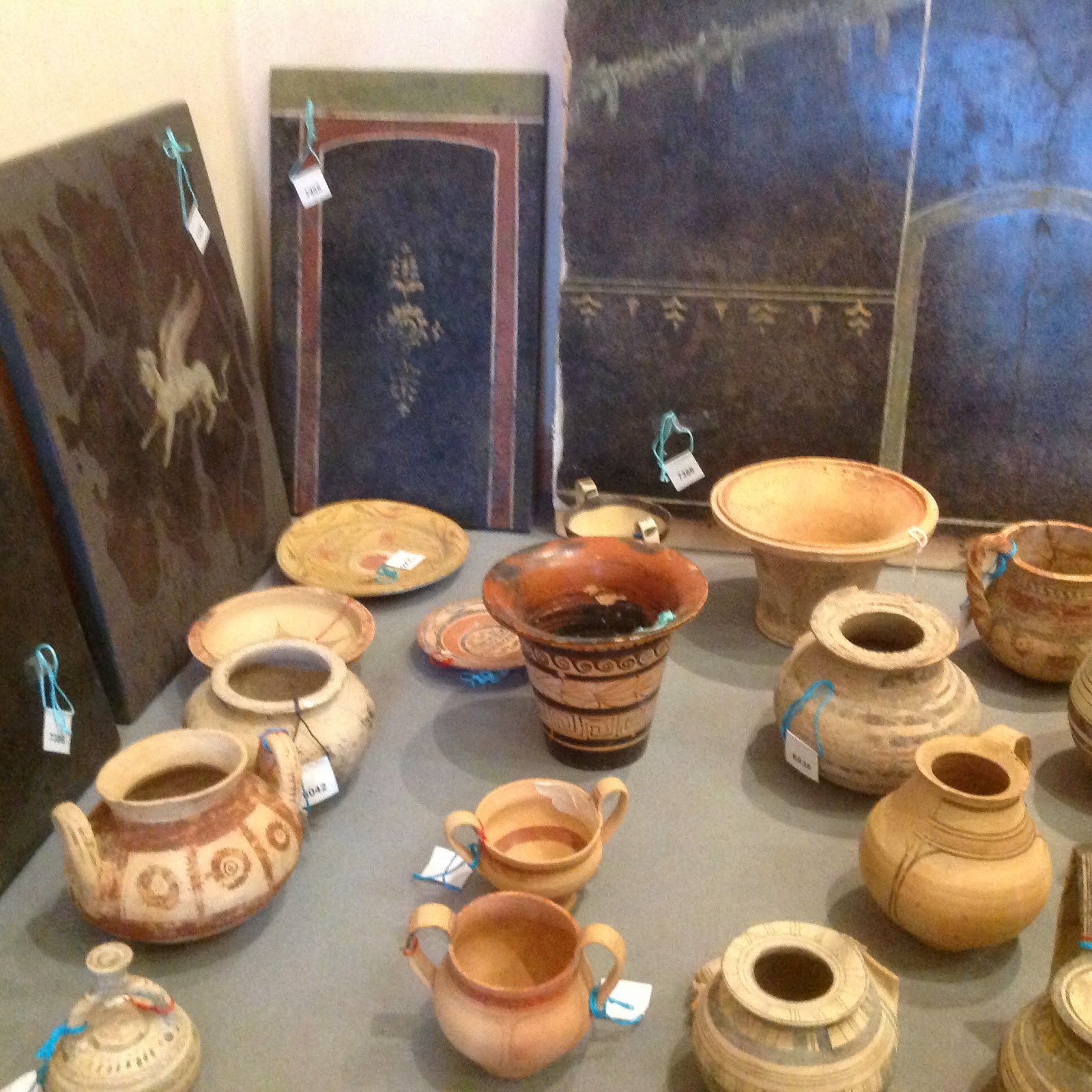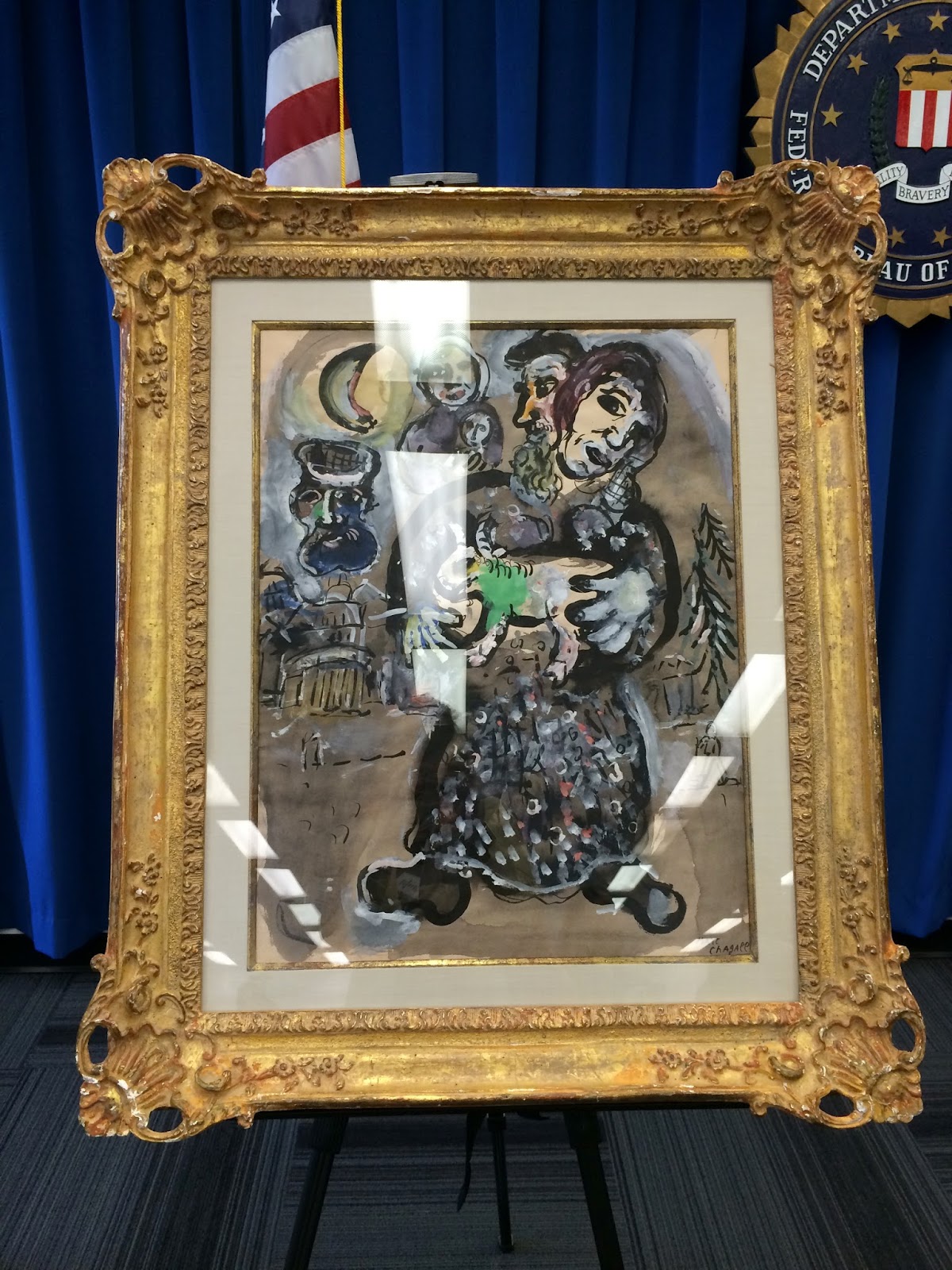Friday, January 30, 2015 -  art theft,Dick Ellis,Paul Gauguin,Pierre Bonnard,Richard Ellis
art theft,Dick Ellis,Paul Gauguin,Pierre Bonnard,Richard Ellis
 No comments
No comments
 art theft,Dick Ellis,Paul Gauguin,Pierre Bonnard,Richard Ellis
art theft,Dick Ellis,Paul Gauguin,Pierre Bonnard,Richard Ellis
 No comments
No comments
Breaking News: Will the Real Owners of the Stolen Paul Gauguin Painting Please Stand Up? A Case for Mediation.
In April 2014 the stolen art world ignited when a press conference conducted by General Mariano Mossa of Italy’s Comando Carabinieri Tutela Patrimonio Culturale art crime squad and the country’s Minister of Culture and Tourism, Dario Franceschini, announced that Italy had recovered two stolen paintings worth more than 33 million euros.
 Originally owned by philanthropist Mathilda Marks, daughter of Michael Marks, who founded the Marks and Spencer retail empire and her husband, Terence Kennedy, the two paintings, Fruits sur une table ou nature au petit chien (Still Life with a Small Dog) by Paul Gauguin and Pierre Bonnard’s La femme aux deux fauteuils (Woman with Two Armchairs) had been stolen from a opulent London flat in Chester Terrace in 1970. The art thieves, posing as burglar alarm repairmen, gained access to the house on the pretext of verifying the owner’s alarm system. Pretending to go about their work, the criminals quickly removed the artworks from their original frames and bolted while the housekeeper was distracted preparing tea.
Originally owned by philanthropist Mathilda Marks, daughter of Michael Marks, who founded the Marks and Spencer retail empire and her husband, Terence Kennedy, the two paintings, Fruits sur une table ou nature au petit chien (Still Life with a Small Dog) by Paul Gauguin and Pierre Bonnard’s La femme aux deux fauteuils (Woman with Two Armchairs) had been stolen from a opulent London flat in Chester Terrace in 1970. The art thieves, posing as burglar alarm repairmen, gained access to the house on the pretext of verifying the owner’s alarm system. Pretending to go about their work, the criminals quickly removed the artworks from their original frames and bolted while the housekeeper was distracted preparing tea.
After their theft, the art works were smuggled out of England and on to France where they were later abandoned on a Turin-bound train arriving from Paris. The culprits were never identified though police speculate that whoever was transporting the paintings may have abandoned them when they were spooked by customs officials on the train.
Found by railway inspectors, the two paintings languished for more than a year in the Turin train system’s lost property section before being auctioned off by Italy's national railway network in 1975 as unrecovered lost property. This time period is significant because the sale occurred five years before the Carabinieri's famous art crime tracking database came into existence. Unaware of their importance, the pictures were sold for a mere 45,000 lire – €26 in today's money, to a Fiat employee identified only as Nicolò, who later moved back to Siracusa, Sicily when he retired from the auto industry job as a metal mechanic in Turin.
The Antiques Trade Gazette, reported that Rome’s public prosecutor Marcello Cascini, has stated that the Carabinieri TPC had been alerted to the paintings when a friend of the Italian buyer tried to sell them. Other news services have reported that the autoworker’s son, Salvatore voluntarily contacted the Carabineri TPC directly when he began to suspect that his father’s paintings where not merely bargain basement knock-off’s. In either case, the family members have been cooperative and have avoided the lime-light while the paintings were sequestered in 2014 until rightful ownership could be established.
 Originally owned by philanthropist Mathilda Marks, daughter of Michael Marks, who founded the Marks and Spencer retail empire and her husband, Terence Kennedy, the two paintings, Fruits sur une table ou nature au petit chien (Still Life with a Small Dog) by Paul Gauguin and Pierre Bonnard’s La femme aux deux fauteuils (Woman with Two Armchairs) had been stolen from a opulent London flat in Chester Terrace in 1970. The art thieves, posing as burglar alarm repairmen, gained access to the house on the pretext of verifying the owner’s alarm system. Pretending to go about their work, the criminals quickly removed the artworks from their original frames and bolted while the housekeeper was distracted preparing tea.
Originally owned by philanthropist Mathilda Marks, daughter of Michael Marks, who founded the Marks and Spencer retail empire and her husband, Terence Kennedy, the two paintings, Fruits sur une table ou nature au petit chien (Still Life with a Small Dog) by Paul Gauguin and Pierre Bonnard’s La femme aux deux fauteuils (Woman with Two Armchairs) had been stolen from a opulent London flat in Chester Terrace in 1970. The art thieves, posing as burglar alarm repairmen, gained access to the house on the pretext of verifying the owner’s alarm system. Pretending to go about their work, the criminals quickly removed the artworks from their original frames and bolted while the housekeeper was distracted preparing tea.After their theft, the art works were smuggled out of England and on to France where they were later abandoned on a Turin-bound train arriving from Paris. The culprits were never identified though police speculate that whoever was transporting the paintings may have abandoned them when they were spooked by customs officials on the train.
Found by railway inspectors, the two paintings languished for more than a year in the Turin train system’s lost property section before being auctioned off by Italy's national railway network in 1975 as unrecovered lost property. This time period is significant because the sale occurred five years before the Carabinieri's famous art crime tracking database came into existence. Unaware of their importance, the pictures were sold for a mere 45,000 lire – €26 in today's money, to a Fiat employee identified only as Nicolò, who later moved back to Siracusa, Sicily when he retired from the auto industry job as a metal mechanic in Turin.
The Antiques Trade Gazette, reported that Rome’s public prosecutor Marcello Cascini, has stated that the Carabinieri TPC had been alerted to the paintings when a friend of the Italian buyer tried to sell them. Other news services have reported that the autoworker’s son, Salvatore voluntarily contacted the Carabineri TPC directly when he began to suspect that his father’s paintings where not merely bargain basement knock-off’s. In either case, the family members have been cooperative and have avoided the lime-light while the paintings were sequestered in 2014 until rightful ownership could be established.
Who is entitled to proceed for restitution and is possession really 9/10ths of the law?
Despite EU efforts to reach uniformity, each domestic law system in the EC provides specific regulations that may vary between Common Law and Civil Code approaches in determining who the rightful owner of a stolen object is.
Following Art.1153 of the Italian Code, "Effects of the acquisition of possession”, in order to resist a forfeiture claim and protect his interests, the bona fides Sicilian buyer first would have to establish that he acquired the artworks and currently holds the items under dispute. Second he would need to prove that he had a "valid" title upon which the goods have been acquired and third he would need to show that he was acting on good faith when he purchased the paintings.
Based on Italian civil code criteria the paintings would have had to have been owned by the Fiat worker for 10 years if he was unaware they were stolen goods or twenty years if he had any knowledge that the artworks he had purchased were hot art.
On the basis of the civil code in Italy, information provided by the Carabinieri TPC that specializes in art and antiquities and given more than forty years had passed since the time of the London theft and subsequent purchase, the Italian courts ruled in the autoworker’s favor last month. The property was returned to its Italian owner who reported that he planned to sell the Gauguin.
His victory proves there is some truth to the old adage, ownership is easier to maintain if one has possession of something and difficult to enforce if one does not.
Italian law. UK law. Swiss Law.
But while Mrs. Marks and her American husband, Terence Kennedy, had no children they did have heirs to their vast fortune.
Terence Frank Kennedy met Mathilda Marks in Paris and were married shortly thereafter on 23 August 1951. A flashy couple, they travelled frequently and spent their money on jewellery, cars, dogs and art. They would buy the Guaguin painting in 1962 from Sotheby’s in New York.
Speaking with Richard Ellis, director of the Art Management Group and a former head of Scotland Yard's Art and Antiques Squad, ARCA learned that when Mathilda Marks died 01 September 1964 she left her widower as the principal beneficiary to her personal estate, leaving him the pictures, which remained in his Chester Terrace home in Regents Park until the high profile art theft in June 1970.
Later he would close the house and travel between Switzerland, London and the South of France where he met John Henderson, then a young actor, who would go on to serve as his personal assistant after he suffered from a major stroke. Henderson would become Kennedy's lifelong friend, support person and constant companion for the next twenty years.
When Mr. Kennedy died in 1997 he made Mr. Henderson his sole heir under a will administered in Switzerland. In addition to a will, Mr. Henderson can produce the complete provenance of the paintings and their original frames, complete with exhibition history.
According to Ellis, the terms of Kennedy’s will means that all of Mr Kennedy's possessions, whether in his keeping at the time or not, now belong to John Henderson, inclusive of the now contested stolen pictures and the paintings' frames which he still has. The fact that investigations revealed no insurance payout having been made on the pictures, means that at least under UK law, Mr. Henderson retains clear title to the art works.
Where do the “owners” go from here?
Mr. Ellis reported that he is attempting to schedule a meeting with Roberto Matarazzo, Italian legal counsel to the 70-year-old retired Fiat factory worker arguing that this evidence seems to dictate that the Carabineri TPC and Italian Courts may not have satisfactorily investigated the claim to ownership with regards to these valuable artworks prior to their ruling in the retiree’s favor. Ellis would like to set up an appointment to discuss the matter in Naples as soon as possible but definitely before any potentially, controversial sale.
This may be a perfect opportunity for all parties to consider the advantages of extra-judicial methods of dispute resolution through the use of a mediator. By sitting down to talk and finding an agreement via mediation on this matter, both parties may be able to arrive at a satisfactory resolution for all parties via Directive 2008/52/EC of the European Parliament and of the Council of 21 May 2008. This directive is specifically intended to encourage amicable dispute resolution vs. long litigious drawn out battles, particularly in civil and commercial matters.
Its the appropriate recourse for art and cultural heritage dispute in the event of an art theft where both the heirs and the purchasing party have vested interests, financial or emotional, in the artworks.
By Lynda Albertson, ARCA
References used in this article:
http://www.antiquestradegazette.com/news/2015/jan/28/british-heir-challenges-italian-factory-worker%E2%80%99s-claim-over-stolen-%C2%A325m-gauguin/
http://www.boglione.eu/it/chi-siamo/focus/item/216-re-getting-back-stolen-valuable-goods-the-eu-perspective.html
http://europa.eu/legislation_summaries/justice_freedom_security/judicial_cooperation_in_civil_matters/l33251_en.htm
Italian Studies in Law: A Review of Legal Problems, edited by Alessandro Pizzorusso
http://www.nytimes.com/2014/04/03/arts/design/two-stolen-paintings-are-found-in-italy.html?_r=0
http://www.panorama.it/cultura/gauguin-bonnard-capolavori/
http://www.thepeerage.com/p36836.htm
http://europa.eu/legislation_summaries/justice_freedom_security/judicial_cooperation_in_civil_matters/l33251_en.htm
Italian Studies in Law: A Review of Legal Problems, edited by Alessandro Pizzorusso
http://www.nytimes.com/2014/04/03/arts/design/two-stolen-paintings-are-found-in-italy.html?_r=0
http://www.panorama.it/cultura/gauguin-bonnard-capolavori/
http://www.thepeerage.com/p36836.htm






















































